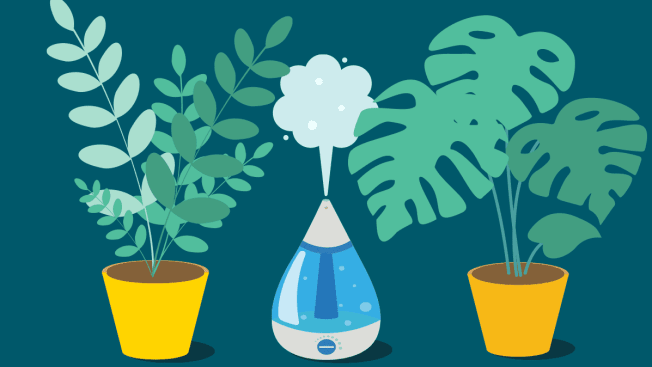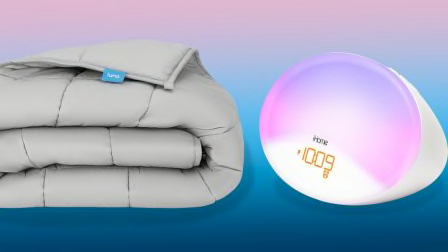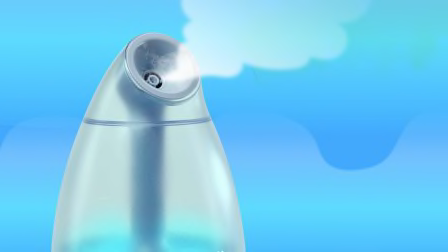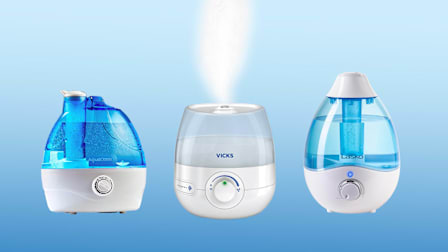What’s the Best Humidifier for Indoor Plants?
Turns out, plants are humidifiers themselves. But you can help them out.
When you shop through retailer links on our site, we may earn affiliate commissions. 100% of the fees we collect are used to support our nonprofit mission. Learn more.

What’s not to like about houseplants? They bring the beauty of nature indoors, add to your décor, can smell nice, and can even relieve stress and boost your immune system. And they’re easy-care, making their own food.
They even create their own humidity.
“Plants have the uncanny ability to regulate the humidity around them,” says Chris Raimondi, who is president of Raimondi Horticultural Group in Ho-Ho-Kus, N.J., and teaches interior landscaping and plantings at the New York Botanical Garden in the Bronx borough of New York City. “They exude more moisture when it’s dry and less when it’s damp. They will adapt to their surroundings."
That said, helping out these natural humidifiers a bit can’t hurt. Certain plants—like that African violet—need more than the typical room humidity to be their best. Others, like cacti and other succulents, need less. And it doesn’t take much to create the right humidity for all your plant types.
How Plants Create Their Own Humidity
Plants add moisture to the air through a process called evapotranspiration. Their roots draw water from the soil; their stalks and stems carry it up into the leaves. Water then evaporates through the pores of the leaves, also known as stomata. The more moisture that’s needed around the plant, the more moisture the plant will emit.
While houseplants do add moisture to the air, baseline humidity levels in their environments can help them really thrive. Typically, that’s when indoor relative humidity is between 40 and 60 percent. The optimal humidity for humans is 30 to 50 percent, according to EnergyStar, so the overlap is in the 40 to 50 percent range.
Have the Right Tools on Hand
If you’re unsure about the humidity of your spaces, invest in a hygrometer, a simple device that measures relative room humidity. You can find one for less than $10; they’re sometimes paired with room thermometers. (If your home humidity isn’t within the optimal range for humans, consider investing in a humidifier or a dehumidifier that can address the issue.) Take these steps as well to ensure the best humidity for plant growth.
CR shares advice on buying plants online, highlighting low-maintenance plants that can help you beat the winter blues. Check out these tools that can help your plants thrive.
Group Plants by Their Humidity Needs
Because certain types of plants are happier in moist environments while others prefer it rather dry, it makes sense to group together plants that have similar humidity requirements, says Anastasia Akhrameika, a plant expert for the app NatureID. On their own, those birds of a feather will regulate their environment. By placing, say, tropical plants in one spot, Akhrameika explains, “the plants will boost humidity among themselves.”
Here are some basic plant categories, in order of humidity needs.
Cacti and succulents: Jade plants, aloes, and other succulents—in addition to snake plants and cacti—are accustomed to arid environments. While a relative indoor humidity of less than 30 percent may bother your family, these dry-climate plants will be perfectly content. “If you have a hot, dry windowsill, that’s a good choice,” Raimondi says.
Large, leafy plants: Monsteras, peace lily, and other common indoor plants originated in the tropics and prefer higher humidity. But they’ll manage fine in the range that is optimal for humans, Raimondi says. Indeed, Mary Jane Duford, a gardening blogger based in British Columbia’s Okanagan Valley, says her home’s normal humidity range of 40 to 50 percent in winter—aided by a whole-house humidifier—suits both the leafy plants and the humans who live there. “It also seems to benefit our musical instruments and hardwood floors,” she says.
Moisture lovers: Plants like moth orchid and Boston fern like muggy environments; orchids thrive in rooms with 50 to 80 percent humidity; ferns are most comfortable at the higher end of that range. These plants do well in bathrooms and kitchens, Akhrameika says. Another tactic is to double-pot them: Plant them in terracotta pots, and place those pots inside larger, plastic pots. (Plastic won’t lose moisture as fast as porous terracotta.) In the space between the two pots, place sphagnum moss; you can get it at many garden centers. Keep that moss watered and moist.
Air plants and bromeliads: These obtain moisture from the air and not the soil, so they require humidity as high as 70 percent. You’ll need to regularly mist around them, buy a dedicated humidifier for them, or place them in a greenhouse or terrarium.
If you’re seeking plug-and-play plants that can stand up to a wide range of indoor humidity levels, consider hardy workhorses such as pothos and spider plants. “They’re just wonderfully easygoing,” says Erinn Witz, co-founder of Seedsandspades, a website for home gardeners. “While they would appreciate some supplemental humidity, they’ll still grow happily even without it in most situations.”
Best Humidifiers From CR's Tests
Here are several top-rated humidifiers that can assist in keeping your home’s humidity comfortable for both your plants and your family. Dozens of additional choices are available in Consumer Reports’ humidifier ratings.
































